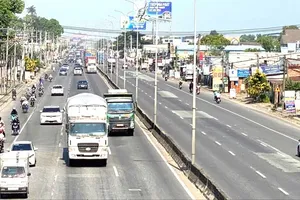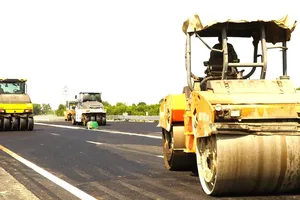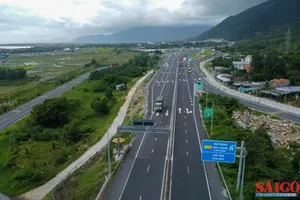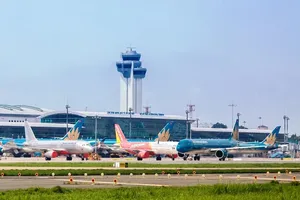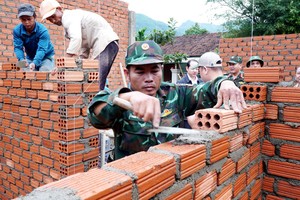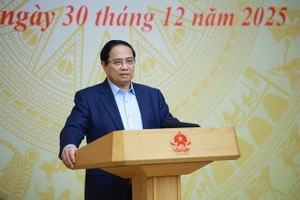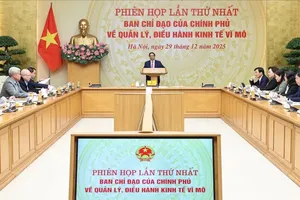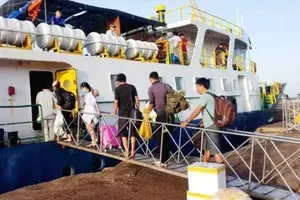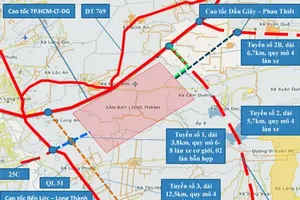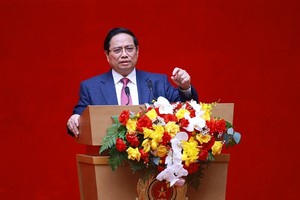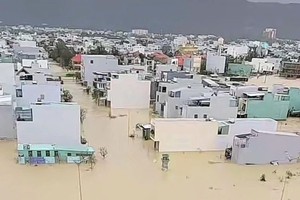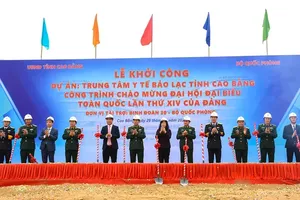 |
A key project is well underway (Photo: SGGP) |
In just the past two and a half years, the transport sector has completed more than 600km of expressways, more than half the number of highway kilometers made over the previous 10 years. Railway, maritime and aviation had also seen many breakthroughs.
Component projects of the North-South Expressway project phase 1 have seen spectacular finish when they were carried out in difficult conditions including hiccups of land clearance and impacts of the Covid-19 pandemic for 2 years, no workers, no materials during social distancing.
Moreover, construction materials skyrocketed, with prices of some materials increasing by 40 percent-50 percent, causing many projects to build in moderation. Projects faced a lack of soil, sand, gravel, and crushed stones - common backfill materials.
Most projects have had slow progress. For example, until October 2022, the projects Mai Son - National Highway 45, and Phan Thiet - Dau Giay only reached about 50-60 percent of the contract value while other projects are in a similar situation. Facing with the risk of projects not completed on time, the Government, the Ministry of Transport and local administrations have been determined to join hands to accelerate them.
As a result, in the last months of 2022 and the first half of 2023, a series of projects including Cao Bo - Mai Son (15km), Cam Lo - La Son (98km), Mai Son - National Highway (45.63km), Vinh Hao - Phan Thiet (101km), Phan Thiet - Dau Giay (99km), Nha Trang - Cam Lam (50km), Van Don - Mong Cai (80km), Trung Luong - My Thuan (51km) have been open to traffic.
The Ministry of Transport was not only determined to complete the existing projects but also preparing to invest in a series of large road projects, striving to complete about 5,000km of highways across regions.
In the last half term, the Ministry has finished four important railway projects on the Hanoi - Ho Chi Minh railway route, helping to shorten passengers’ travel time by train. Currently, the railway sector is implementing 4 upgrade projects which are expected to be completed in 2025.
The Ministry of Transport is also focusing on speeding up the completion of the investment policy of the North-South high-speed railway project and other railway routes such as Lao Cai - Hanoi - Hai Phong, Ngoc Hoi - Thach Loi, HCMC- Can Tho, Bien Hoa - Vung Tau, Thu Thiem - Long Thanh as a basis for calling for investment. In Hanoi, Cat Linh - Ha Dong route is attracting more and more people to use it. The Ministry is also accelerating projects namely Nhon - Hanoi Railway Station in Hanoi, Ben Thanh - Suoi Tien, and Ben Thanh - Tham Luong in HCMC.
Ports and port clusters are relatively synchronously invested and gradually modernized. For instance, the Ministry is pouring more into ongoing projects such as the channel project for large ships entering the Hau River (phase 2) and the upgrade of Cho Gao canal route (phase 2) while building wharves 3, 4, 5, 6 in Lach Huyen port area in Hai Phong City and upgrading Cai Mep - Thi Vai channel leading to Cai Mep container terminal in Ba Ria - Vung Tau Province, Tho Quang channel in Da Nang City, Quy Nhon channel in Binh Dinh Province and Nam Nghi Son in Thanh Hoa Province.
Similarly, inland waterways are also being invested to improve capacity, with investment projects to improve the stability of the Duong Bridge in the North and bridges on waterways in the Mekong Delta.
In the aviation sector, the ground-breaking project of Long Thanh International Airport (phase 1), the Terminal T3 of Tan Son Nhat International Airport, renovation and expansion of a number of airports such as Dien Bien, Cat Bi, Phu Bai, are expected to facilitate localities’ growth.
Former Vice Chairman of the National Financial Supervisory Commission Le Xuan Nghia assessed the transport sector has made efforts to speed up project progress, which is a shining example in the context that the country needs to innovate to integrate and accelerate economic development.
According to Deputy Minister of Transport Le Dinh Tho, all activities must focus on accelerating the progress of projects. For example, the preparation, verification, appraisal and approval of feasibility study reports for projects has been done in less than 6 months, while it normally takes about 1-1.5 years. It takes about 5 months for the formulation, verification, appraisal and approval of the technical design and estimate.
To speed up the progress of projects, the National Assembly has approved a series of specific mechanisms for investment in transport infrastructure, shortening procedures, and allowing decentralization of powers. The State Steering Committee for National Traffic Projects was also established for the first time, led by the Prime Minister to solve all key project-related problems.
Though the Ministry has identified transport infrastructure as one of three strategic breakthroughs, which should be prioritized for investment, Minister of Transport Nguyen Van Thang affirmed that infrastructure investment needs to ensure good management in proper allocation of capital between regions such as the Southeast, the Red River Delta, and Mekong Delta, and difficult areas such as the Northwest, Central Highlands and South Central.
With strong investment in transport infrastructure, the Ministry of Transport will gradually restructure the transport market according to the set targets - reducing the road transport, increasing inland waterways and railways, gradually reducing logistics costs, ensuring traffic safety, and increasing the competitiveness of the economy.



